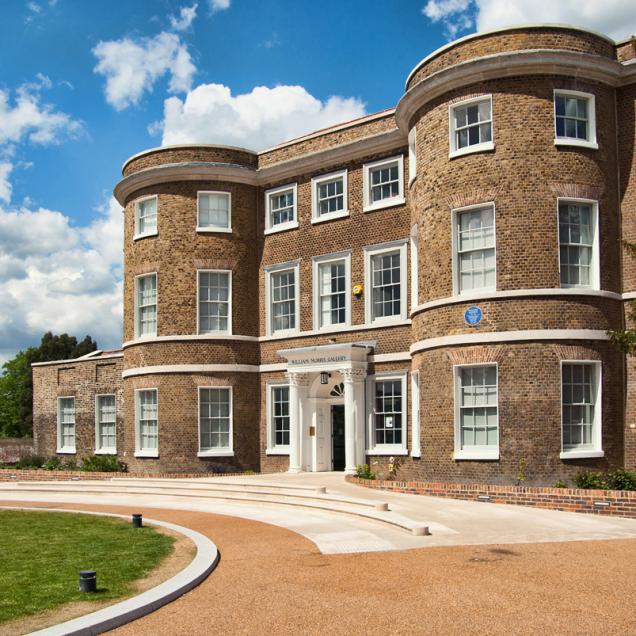

Grayson Perry tapestry exhibit heralds new era for London home of Arts and Craft Movement's influential leading light
Rescued on the brink of closure, the house of the man who once exercised more influence than any other on the way British people see their homes is to reopen next month after a £10m refurbishment of its interiors, contents and adjoining public gardens in London.
William Morris, the philosopher, novelist and leading light of the Arts and Crafts Movement, once urged householders to have nothing they did not "know to be useful, or believe to be beautiful" in their domestic environment, and soon visitors to Water House in Walthamstow can judge him at his word once more.
The Georgian country-style house, which stands in Lloyd Park, was rescued from the threat of permanent closure by a £1.5m Heritage Lottery Fund grant, matched by the local authority. Donations from other trusts and foundations took the total for the redevelopment of the house to £5m. It will open again on 2 August as both a museum with permanent exhibits and a contemporary gallery.
The first visiting artwork to be displayed will be Grayson Perry's Walthamstow Tapestry, offered in tribute to Morris, one of his heroes. The huge artwork, displayed until 23 September, comments on the significance of brands in our lives and was inspired by ancient Malaysian batiks and east European folk art. "It is a wonderful first show for us," said Lorna Lee, head of culture and community services at Waltham Forest borough council, "because the tapestry draws on Morris's ideals and brings contemporary arts and crafts back to his home."
In 2007 the gallery and its collection were in peril, as the Observer reported. The council had cut back opening hours to save money, despite the fact many exhibits were the gift of artist Sir Frank Brangwyn, one of Morris's students, who stipulated that all donated pieces should be on view to the public for a minimum period each week.
Campaigners, backed by the former culture secretary, Lord Smith of Finsbury, Tony Benn and Morris's biographer, Fiona McCarthy, argued that closure would bring shame on Walthamstow, where the influential designer and thinker was born in 1834.
The new permanent displays will include printed, woven and embroidered fabrics, rugs, carpets, wallpapers, furniture, stained glass and painted tiles designed by Morris and by Edward Burne Jones, Dante Gabriel Rossetti and Ford Madox Brown. There will also be displays of the work of Morris's followers in the Arts and Crafts Movement, which had its heyday from the 1880s to the 1920s.
"The house has been a public museum since 1950, but it will bring something new now because it is about Morris's life as well as his work," said Lee. "It has importance on both a regional and a national scale, but it is also important that it gives people nearby the chance to see high-quality displays. That is something Morris was concerned about."
Many of Morris's philosophical edicts are almost as well known as his wallpaper designs and one of them neatly expresses Lee's point: "I do not want art for a few any more than education for a few, or freedom for a few."
The gallery will use other selected Morris quotations in order to communicate what a polymath he was. "Everyone will come to the house because of something they know about Morris, but they will all see many more of his facets," said Lee.
As Morris might have chosen to add: "The past is not dead, it is living in us, and will be alive in the future which we are now helping to make."
© The Observer